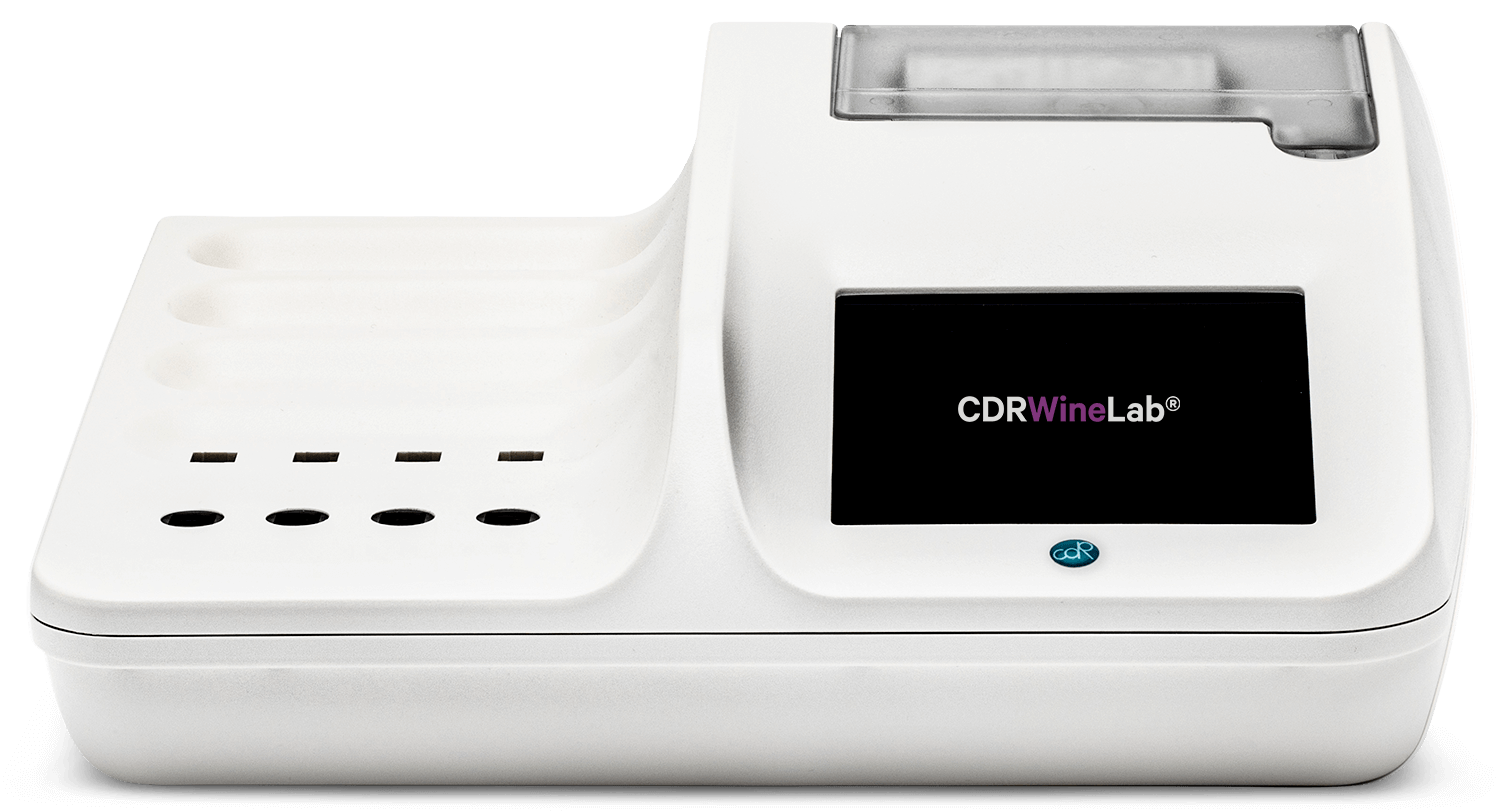CDR WineLab®: Your wine analyses, in total autonomy.
CDR WineLab® is a reliable, complete and fast system of wine analyses. It enables you to carry out analyses for the control of the winemaking process both in the laboratory and in the wine cellar without the need for specialised personnel.
No need for external laboratories, directly in the wine cellar
With CDR WineLab® you no longer have to send wine and must samples to external laboratories, you can have the results of analyses in autonomy and in real time so that you can promptly make the most important decisions during winemaking process.
From harvesting to bottling, all the analyses you need.
You will have at your disposal the main oenological analyses in just one instrument for a complete control of the winemaking process. With CDR WineLab® you can carry out analyses of samples of wine in the unaltered state, whereas must requires simple and rapid preparation. The reagents are pre-filled into vials and ready to use. The methods used have been studied by researchers of the CDR chemical laboratories in order to optimise the reference methods, making the procedures simple and fast. The results obtained are therefore correlated with those of the reference methods.
CDR WineLab® is:
Reliable
The instrument ensures results in accordance with reference methods. The use of LED reading cells guarantees high sensitivity, a wide measuring range and excellent repeatability of the results.
Simple
The analytical methods are simpler than traditional ones. The system can be used not only in the laboratory, but also on the production line in real time, by non-expert operators. In addition, the instrument has a Help function for step-by-step user guide.
Fast
The methods developed in CDR laboratories speed up the analysis procedures: sample preparation is absent or very simple and analyses are carried out in just a few steps. It is possible to analyse several samples simultaneously or manage the determination of several analytical parameters at the same time of the same sample.
Which model is the most suitable for your needs?
CDR WineLab®
- Complete analysis panel, supplied already configured
- Up to 16 determinations simultaneously
- Possibility of carrying out analyses of the same sample
- Integrated printer
- Full connections (LAN - USB - Bluetooth barcode/QR code reader)
CDR WineLab® Jr
- Partial analysis panel, supplied configured with 3 analyses of your choice, implementable
- Up to 3 determinations simultaneously
- Wireless connection to external printer
- USB connections
Make the best decisions for your wine.
You will be able to monitor your winemaking process at every stage. Discover how simple, fast and effective it is to analyse your products in total autonomy.
...
